Concept of coordinate system:
Every day, we see lots of things moving around. For example, a vehicle is passing through from one place to another. In scientific terms, an object is said to be in motion, if it changes its position with time; and at rest, if it does not change its position with time.
A coordinate system, shown below, consisting of three mutually perpendicular axes, labelled X-, Y-, and Z- axes is used to locate the position of an object in motion or at rest. The point of intersection of these three axes is called origin and denoted as ‘O’. The coordinates (x, y. z) of an object describe the position of the object with respect to this coordinate system.
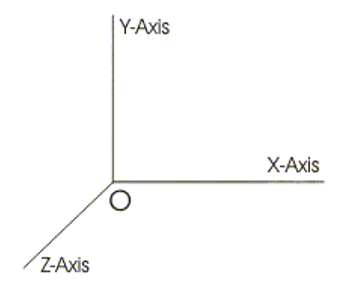
Figure:1.a
To measure time, a clock is introduced in the coordinate system.. The coordinate system along with the clock constitutes a Frame of reference.
To describe motion along a straight line, an axis, say X-axis can be taken, so that it coincides with the path of the object. Positions to the right of origin O are taken as positive and to the left of O, as taken as negative. This is also applicable for Y-axis. This is shown below.

Figure:1.b
Distance and displacement:
Consider, an object is at position A at time t$_{1}$ and at position
B at time t$_{2}$.

Figure:1.c
In the time interval between t$_{1}$ to t$_{2}$, the object has travelled a path ACB to reach at B. The length of the path ACB is known as the \textbf{distance} travelled by the object in the time interval t$_{1}$ to t$_{2.}$
Now if the initial position A and the final position B are connected by a straight line, the shortest path length is obtained. This shortest path between two positions is called displacement.
Displacement of an object has both magnitude and direction. The magnitude of displacement is equal to the length of the straight line joining initial and final positions; and its direction points from the initial position towards its final position.
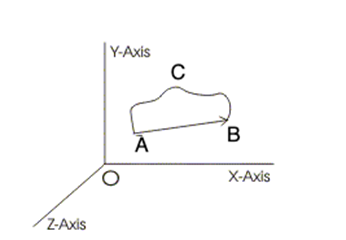
Figure:1.d
So, displacement is defined as the change in position of an object.
If $x_{1}$ and $x_{2}$ are the positions of an object at time $ t_{1}$ and $t_{2}$, then the displacement in time $\Delta t=t_{2}-t_{1}$ is given by $\Delta x =x_{2}-x_{1}$.
Let’s look at the below examples to understand displacement in detail.
Example 1: An object travels from P to Q, then Q to R, R to S and then comes back to P. The total path covered i.e. the distance travelled is = 6+2+6+2 = 16 m.
As the object comes back to the initial position P, therefore the displacement of the object is zero.

Figure:1.e
Example 2: An object travels from A to B, then to C as shown below.

Figure:1.f
The distance travelled by the object 4 + 3 = 7 m.
As the displacement is the shortest path between the initial and final points, therefore, the displacement of the object is AC = 5 m and its direction is from A to C.
Example 3: An object moves from point A to point D through B, C and E.
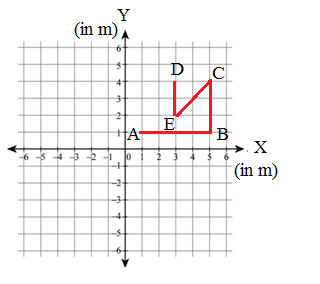
Figure:1.g
- Calculate the final displacement.The final displacement of the object = final position – initial position = 3 – 1 = 2 m.
- Calculate the distance travelled from point A to C.
Distance travelled from A to B = 5 – 1 = 4 m
Distance travelled from B to C = 4 – 1 = 3 m
So, total distance travelled = 4 + 3 = 7 m
Position-Time graphs (General representation of the motion of an object):
The object is at rest:
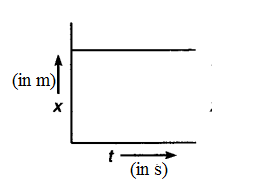
Figure:1.h
The object is in uniform motion:
If an object covers equal distances in equal intervals of time, it is said to be in uniform motion.
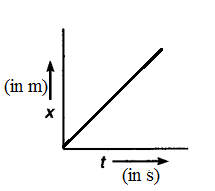
Figure:1.i
